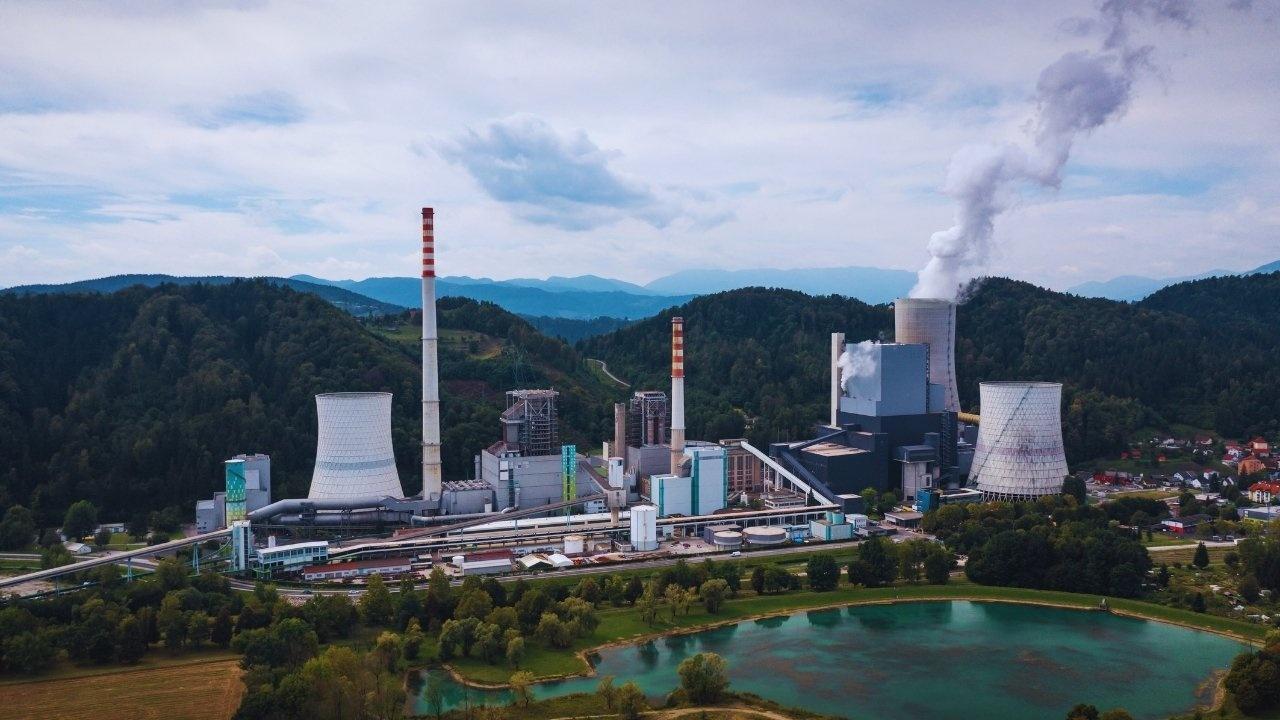
Join 10k+ people to get notified about new posts, news and tips.
Do not worry we don't spam!

Post by : Anis Farhan
As the global shift towards solar and wind continues, energy reliability emerges as a pressing challenge. Fluctuating sunlight and wind conditions lead to difficulties in meeting real-time energy demands. Although traditional batteries assist in this capacity, they often come with high costs, limited durations, and a significant environmental footprint.
Next-generation thermal storage provides a solution by storing energy in the form of heat, a method that is both scalable and effective. Advanced systems harness materials like molten salts, phase-change elements, and ceramic blocks to maintain substantial quantities of heat at elevated temperatures.
The outcome: affordable, enduring, and eco-friendly storage options that can stabilize energy grids, provide power for entire regions, and keep industrial operations running continuously.
Thermal storage is quickly being recognized as a vital element of modern renewable energy grids for several compelling reasons:
It delivers extended storage capabilities at a low cost.
It lessens the dependency on lithium and other mined materials.
It caters to both electricity and industrial heating needs.
It exhibits stability and resilience over lengthy periods.
It seamlessly integrates with solar, wind, and waste heat systems.
While batteries are effective for short durations, thermal storage excels in offering longer-term backup—an essential service for ensuring the reliability of clean energy.
Thermal storage operates on a straightforward principle: capturing renewable energy as heat for future use. This heat can be converted back into electricity or used directly in residential or industrial settings.
Key scientific principles include:
Sensible Heat Storage: Materials like rocks or molten salts increase in temperature to store heat.
Latent Heat Storage: This method stores energy during phase changes.
Thermochemical Storage: This innovative approach uses chemical reactions to secure energy with minimal losses.
These techniques enable storage capabilities that far outstrip those of traditional batteries.
Currently, molten salt is the predominant and most sophisticated form of thermal storage. Typically used in conjunction with Concentrated Solar Power (CSP) plants, this technology heats salts using mirrors to reach high temperatures.
The advantages of molten salt include:
Extended heat retention.
Operational temperatures exceeding 500°C.
Facilitation of solar power generation at night.
Ability to convert stored heat into electricity using steam turbines.
Proven long-term performance in utility-scale applications.
Recent innovations in salt mixtures enable even higher temperatures, enhancing the efficiency of thermal-to-electric conversion.
Phase-change materials are set to transform thermal storage with their high energy density and compact nature. These substances store energy during melting and release it as they solidify.
Commonly used PCMs include:
Paraffin waxes
Salt hydrates
Metal alloys
Bio-based materials
PCMs are increasingly utilized in district heating, industrial processes, and integrated building storage due to their durability and scalability.
Emerging storage systems utilizing crushed rock, ceramics, or composite blocks directly heat materials using electricity from renewable sources such as wind and solar.
Advantages include:
Incredibly low production costs.
Non-toxic, abundant resources.
Exceptional durability and low maintenance.
Storage temperatures surpassing 800°C.
These systems are perfect for industrial heating and large-scale grid storage across a range of climates.
Groundbreaking advancements in thermal storage include the use of liquid metals and high-temperature alloys, allowing heat storage beyond 1,000°C.
These systems can:
Substitute fossil fuels in heavy industries.
Assist in metal refining and chemical production.
Power high-efficiency turbines for electricity.
This technology expands thermal storage applications into sectors that have traditionally been hard to decarbonize.
Thermochemical storage exploits reversible chemical reactions, allowing energy storage when a compound is split and release when it recombines.
Benefits are manifold:
Minimal thermal losses.
Exceptional long-duration storage options.
Potential for shifting energy use across seasons.
Compact design.
Although still in development, this technology shows significant promise for countries with fluctuating seasonal energy demands.
More grid operators are recognizing the value of thermal storage for maintaining balance over extended periods. When energy generation from wind or solar varies, thermal systems offer heat or electricity to stabilize the grid.
Benefits for grid management:
Smoother load management.
Reduced wastage of excess renewable energy.
Lower dependence on natural gas plants.
Reliable output at night.
Enhanced integration with industrial sectors.
As renewable energy becomes more prevalent, thermal storage is crucial for addressing fluctuations in supply.
Heavy industries—like steel, cement, and glass—require extremely high temperatures traditionally produced through fossil fuels. Next-gen thermal storage systems can provide these temperatures using stored renewable energy.
The benefits for industries include:
Consistent heat supply around the clock.
Lower emissions.
Reduced long-term operational costs.
Integration with electrified processes.
On-demand heat capabilities.
Thus, thermal storage becomes an essential component in efforts to decarbonize industries.
Thermal storage is transforming district heating systems in colder regions. Large storage units, such as underground pits, store heat generated by renewable sources for residential and commercial heating.
These systems offer:
Heating for homes.
Energy for commercial buildings.
Support for public facilities like hospitals.
Enhanced flexibility with heat-sharing microgrids.
Community-scale thermal storage improves energy autonomy and reduces costs.
Thermal storage is highly effective when combined with solar energy solutions. Concentrated solar plants generate ample heat, while photovoltaic systems can channel spare electricity into thermal storage.
Benefits of this combination include:
Availability of solar energy after dark.
Reduced reliance on backup fuels.
Increased overall efficiency of solar plants.
Greater flexibility in grid management.
This integration positions solar power as a reliable round-the-clock energy source.
Thermal systems present distinct financial advantages:
Inexpensive foundational materials.
Extended lifespans for systems.
Minimal degradation over time.
Low maintenance demands.
Strong scalability without extensive resource use.
This makes thermal storage exceptionally well-suited for nations lacking access to battery minerals or requiring extensive industrial storage solutions.
Hydrogen generation relies on both heat and electricity, both of which thermal storage can provide efficiently during periods of low-cost renewable energy availability.
Benefits include:
Enhanced efficiency of electrolyzers.
Decreased strain on the grid.
Optimized renewable usage.
Continuous hydrogen production capabilities.
This symbiosis strengthens both sectors as countries progress toward zero-emission fuels.
Thermal storage avoids many environmental challenges associated with battery materials.
Sustainability benefits include:
Minimal use of rare materials.
Recyclable core components.
Low environmental impact during manufacturing.
Safe, non-flammable functionality.
Longevity in operation.
These characteristics position thermal storage as a cornerstone for future green energy strategies.
Despite its promise, thermal storage faces hurdles:
High initial establishment fees for large facilities.
Limited global standards for technology.
The necessity of skilled labor for engineering.
Slower scalability comparing to battery technologies.
Insufficient policy incentives across various areas.
However, quick advancements and increasing climate commitments are paving the way to overcome these challenges.
Upcoming generations of thermal systems may include:
Ultra-high-temperature ceramic materials.
Next-gen metal alloys.
Advanced molten salt technologies.
Modular thermal storage units for buildings.
Integration tools for thermal grids.
AI-driven heat management systems.
Seasonal heat storage solutions.
These future innovations will help create a landscape where thermal storage becomes as ubiquitous as solar power.
Next-generation thermal storage systems stand as crucial players in the transition to clean energy. They offer solutions for grid stability, industrial decarbonization, and around-the-clock renewable energy supply that traditional chemical batteries cannot match.
As governments amplify climate initiatives and renewables expand, thermal storage is set to play a pivotal role in global energy reliability—ensuring stable heat, dependable electricity, and fostering a sustainable future for everyone.
This piece covers developments in global renewable energy and may not be representative of specific technologies or accessibility in every locale. Energy performance can vary based on specific conditions, system architecture, and regulatory frameworks.










Anwar Ibrahim Pledges Comprehensive Probe into FIFA Football Player Bans
Anwar Ibrahim commits to a thorough investigation into FIFA's suspension of seven players, ensuring

Kagiso Rabada To Miss Final Test Against India
Kagiso Rabada is sidelined for the second Test and upcoming matches against India due to a rib injur

Rishabh Pant Takes Charge as Shubman Gill Bows Out of Second Test
Shubman Gill is sidelined for the upcoming Test in Guwahati due to a neck injury, with Rishabh Pant

Starc's Bowling Blitz Leaves England Reeling on Opening Day in Perth
Mitchell Starc took 7 wickets as England faltered on Day One in Perth, with Australia trailing by 49

Kazuma Okamoto and Kona Takahashi Join MLB Posting System
Kazuma Okamoto and Kona Takahashi enter the MLB posting system, providing a chance for teams to sign

Texans Triumph Over Bills 23-19 with Stellar Defensive Play
In a gripping encounter, Texans claimed a 23-19 victory against the Bills, fueled by Davis Mills' to